
Early Hours with the Boys of Ocho Seis or: How Not to Get Lost in the Mercado Central
text and photos by Kevin VaughnThis story is part of a monthly collaboration with POSCO, a small Argentine company that produces vegetable-cured, hand-crafted leather shoes. Once a month, MATAMBRE x POSCO will bring a story inspired by walking in search of the simple pleasure of discovery.
hace click aquí para leer en castellano
The best time to arrive to Buenos Aires’ Central Market is around 3 am, when the only luster in the sky comes from the distant city lights. I dutifully arrive at 3:30 per the instructions of Pablo Savio and Facundo Kreiman, who I’m joining on their Monday market run. Pablo and Facundo are two cooks who purvey produce for other cooks under the moniker Ocho Seis (eighty-six), kitchen speak for when a dish runs out. We’re joined by Juan Carlos Ortíz, pizza master and Ocho Seis client, who is on the hunt for habanero, spinach, and blood orange, and like me, wants to see what Pablo and Facundo see.
As soon as we move out of the indigo blue night into the market, the fluorescent lights shock my pupils like being woken suddenly with the sensation that I’m falling out of bed. Wooden crates slam into one another with cracks and screams, vendors light up cigarettes, and the sound of banter between sips of mate reverberates throughout the warehouse.
“Be careful not to get run over,” Pablo says over his shoulder, pointing to all the men sprinting down the aisles with carts. They’re the market’s blood cells, in charge of collecting shoppers’ purchases from different warehouses and vendors and rushing them to the delivery vans. They only give you a single whistle as a warning that they’re coming up behind. “I’ve haven’t been hit,” comments Pablo. “Yet.”
This is my third visit to the Mercado Central, which is as dense as a city. And like any good city, it’s uninviting to outsiders. It has its own lexicon; a common language, rhythm, and set of rules. The people who call it home possess the kind of straight-shooting candidness that takes hold when every day is loud, quick, and overcrowded. And for a transient like me, this world is indifferent to my passing presence.
Pablo and Facundo move through it all like seasoned taxi drivers. They know the shortcuts and the dead ends. In a uniform sea of root vegetables and lettuce, they know who sells the rare herbs, who has the best spaghetti squash, and which vendors have the right potatoes for frying. And when the night is over, they lead us to the best place to eat at 5am. It’s a bowl of hot beef and chuño soup with a big scoop of red hot sauce served from industrial-sized pots on a patch of asphalt outside warehouse number 8.

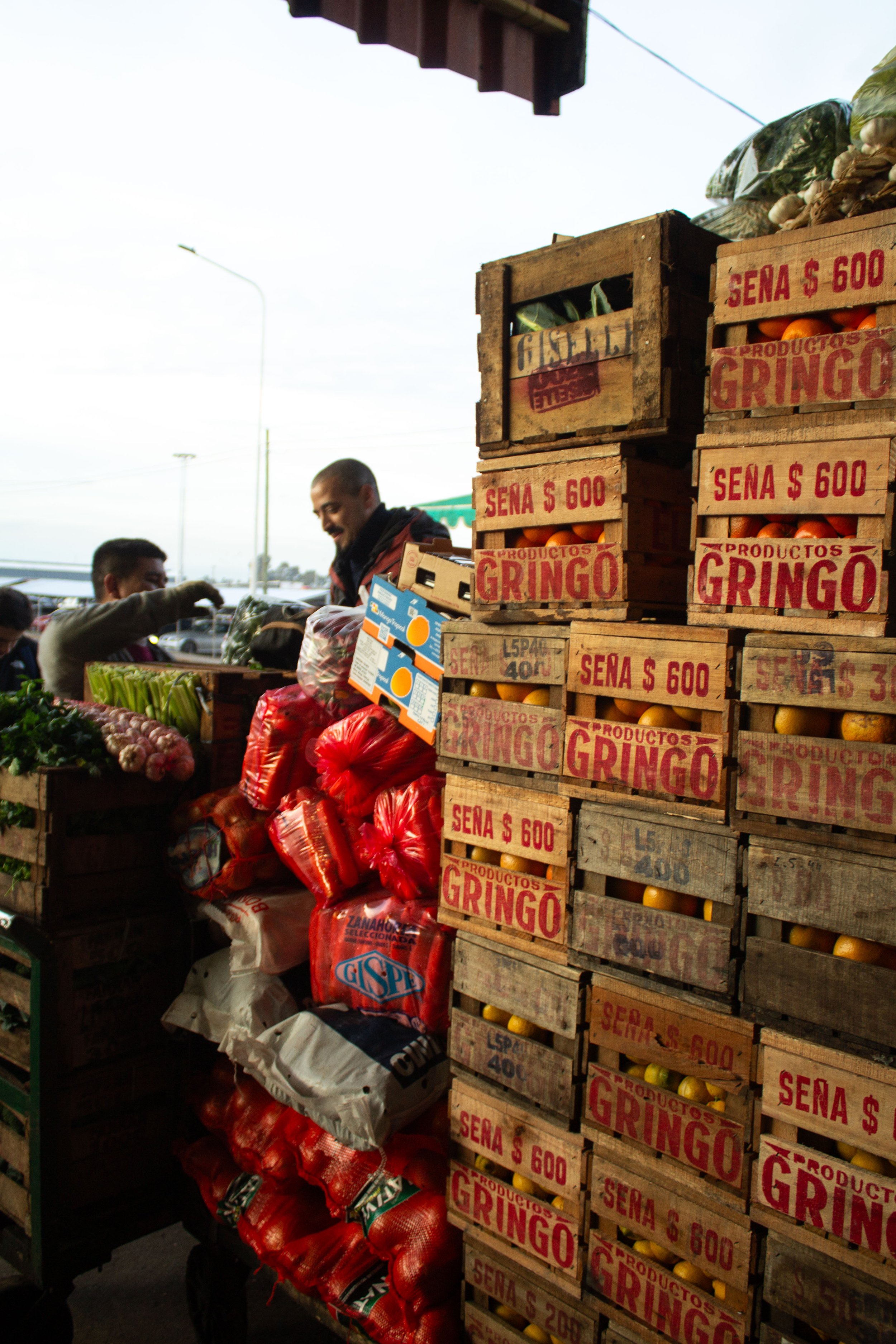

NOT A SUBSCRIBER BUT ENJOY READING MATAMBRE?
Nothing is really free. Your support pays editors, writers, illustrators, copy-editors, and translators.
BECOME A SUBSCRIBER OR SUPPORT WITH A SMALL DONATION
There’s a 1955 film called Mercado de Abasto, about a love triangle that erupts against the backdrop of Buenos Aires’ original Central Market. The movie stars famed actress, tango singer, and showgirl Tita Merello, who at the time was such a powerhouse that the title sequence begins with her credit. The orchestra booms as she pulls back a line of plucked chickens on hooks like a theater curtain. She squeezes her head through the carcasses and yells ¿Qué pasa? to someone off-screen with bent eyebrows and a sardonic grin. The market’s facade flashes onscreen, the title card appears, and the camera pans across regular shoppers walking through hallways lit by arced stained-glass windows.
The Abasto was built in the 1930s as part of a city-wide project to feed a growing need for marketplaces. It survived for a little less than fifty years, when in 1984, it was ditched and transported over city lines. The Mercado de Abasto is now the Abasto Shopping Center, swapping chickens for Adidas trainers and 4k televisions.
Today, the best spot to appreciate architect Viktor Sulcic’s original design, a towering mix of Art Deco and Brutalism marked by multi-level atriums and undulating glass and concrete roofs, is from a melamine table next to a McDonalds. It is still, partially, a food market, the grotesqueness of a line of freshly plucked chickens hanging from hooks replaced with neatly packaged, ready to order McNuggets.
In 1979, when the market was in the middle of construction, the Minister of Social Wellbeing, Counter Admiral Jorge Alberto Fraga, delivered a televised tour: “This is an incredibly important construction. Maybe the most important in the world, which will bring the population the possibility of better commerce and access to fair prices without certain intermediaries. I truly believe this is great progress for our country.”
Walking through twelve cement and corrugated metal warehouses that look more like industrial cattle barns than a market, I’m not inspired with the same awe as the Abasto. The most important construction in the world is hysterical, indulgent — albeit unsurprising from a minister representing a military junta. But, the question is, has it brought better commerce and access to fair prices? My own reaction is NO in capital letters.
Although the capital isn’t the center of the country, a giant market in an industrial parkway, practically inaccessible without a car, rather than several marketplaces across Buenos Aires, distances regular people from the food they can choose to eat and ingredients they even know exist. And if my collection of old cookbooks can be logged as evidence, it appears that the Argentine cookbook has shrunk in the last few decades.
In fact, if I can permit myself a little creative hyperbole, commerce and access to more varied ingredients is pretty limited, probably because of the location of the market. Despite being a country of varied climates, soils, and communities of people, the palate is marked by a handful of flavors. According to Mercado Central statistics published in 2021, 38% of vegetables sold is potato. Following behind is tomato and onion, both with 13%, squash with 7% and carrot with 6%.
What surprises me about those numbers is there are more than 900 stands visited by 10,000 people daily, who mostly resell to 13 million people spread across the Buenos Aires metropolitan area. Let’s assume half those stands are an even split between fruits and vegetables. That’s still about 171 stands selling mostly potato, which after two hours of strolling, wouldn’t surprise me. I’m worried of sounding like a culinary snob when really I want to express genuine confusion that 13 million people collectively demand more.
“Today, the best spot to appreciate architect Viktor Sulcic’s original design, a towering mix of Art Deco and Brutalism marked by multi-level atriums and undulating glass and concrete roofs, is from a melamine table next to a McDonalds.”
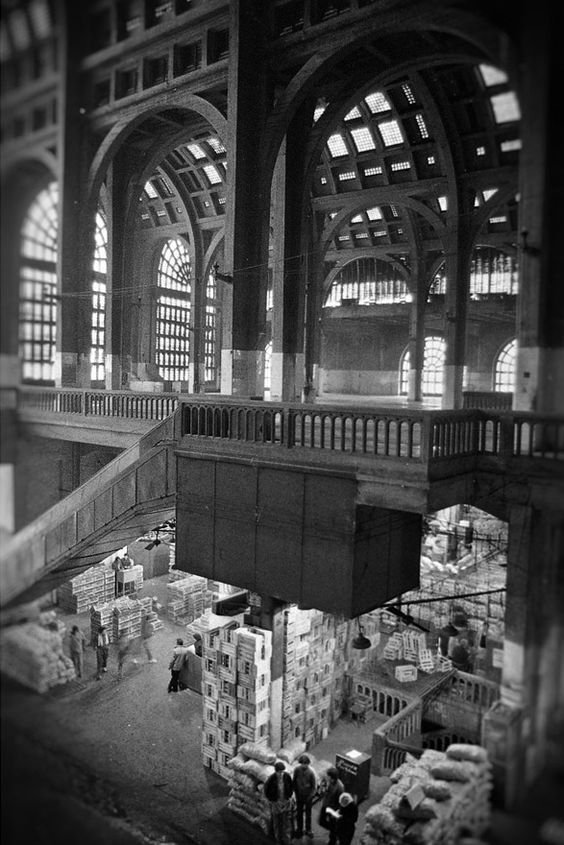
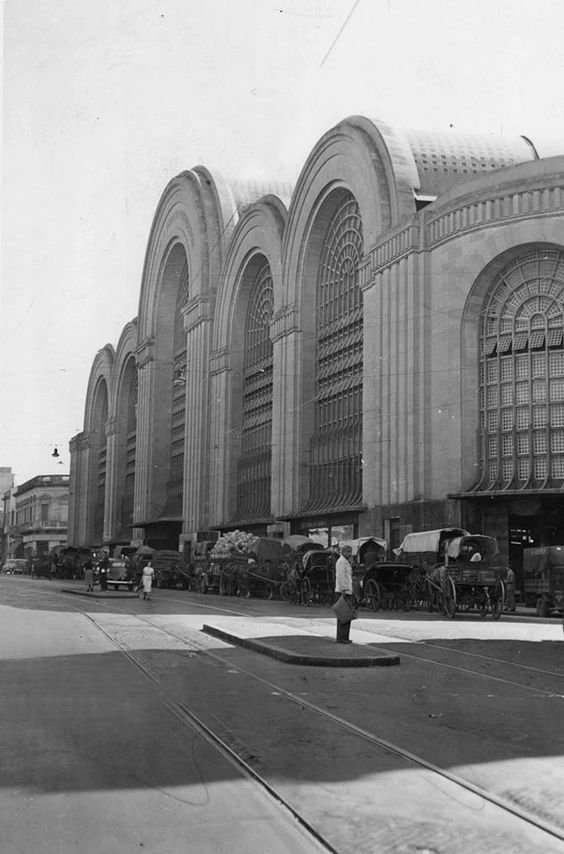
All the time I hear variations of, No one will buy [insert ingredient that’s not a potato]. Pablo and Facundo hear it from their purveyors. Whole milk thistle, rhubarb, onion flowers, to name the most unorthodox, are discarded like weeds unless otherwise interrogated. Chau. Fin. Eighty-six. Which makes me curious: which is the chicken and which is the egg? Do people refuse to consume more than five vegetables because they aren’t interested or are they uninterested because they’re absolutely stupefied by anything beyond more than five vegetables?
Of course these queries don’t have simple answers and are obviously (?) wrapped up in bigger questions of inflation, agribusiness monopolies, colonialism, late stage capitalism, urban planning, and semiotics, topics too large to cover here, and unironically, counterproductive to my own needs to appeal to a larger audience. I am, also, a realist. The Central Market is what we’re stuck with, so, in regards to much simpler questions of taste: How can consumers be incentivized to be more curious, more demanding, and dislodge foods stuck in the supply chain?
Before I say it: I don’t think the revolution will happen in Palermo Soho nor do I believe that restaurants or the media that gravitate around them (influencers, cooking shows, food publications) can save good eating alone. But, I do think they should want to. Cooks should care, writers and producers and editors, and even, yes, influencers, should care, too, about the possibilities of eating, about respecting seasonality, about communicating the origins and cultivation of the food we eat.
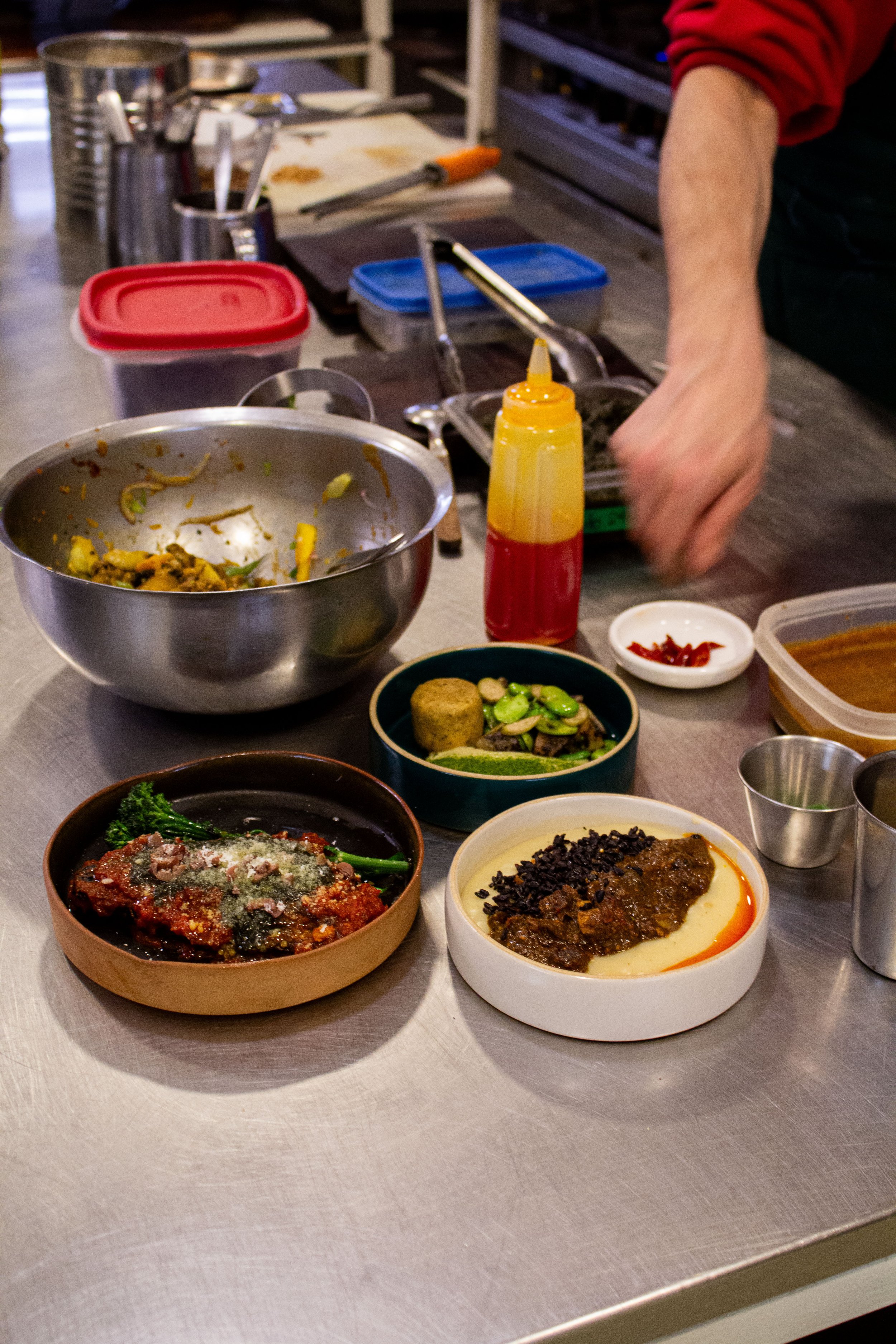
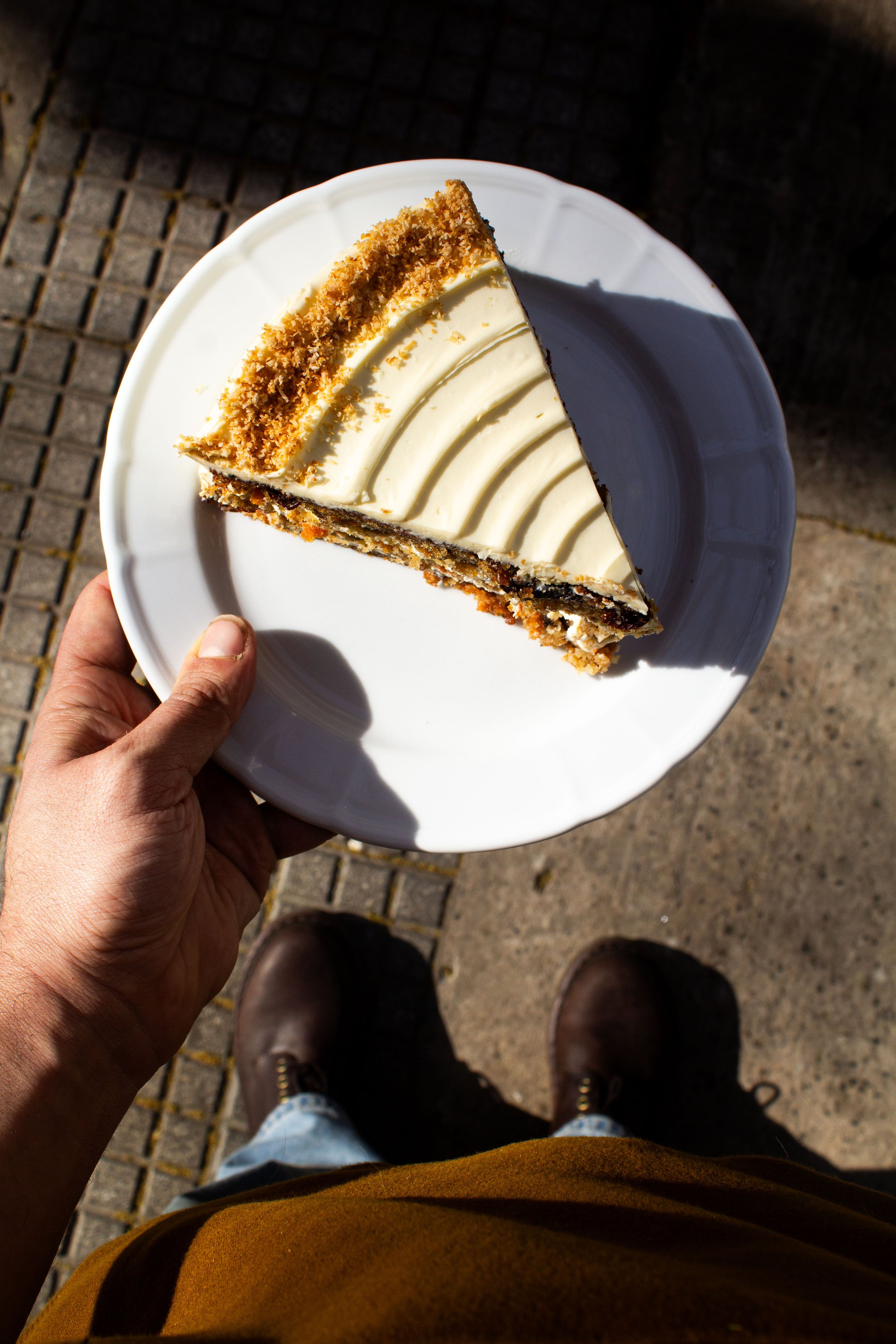
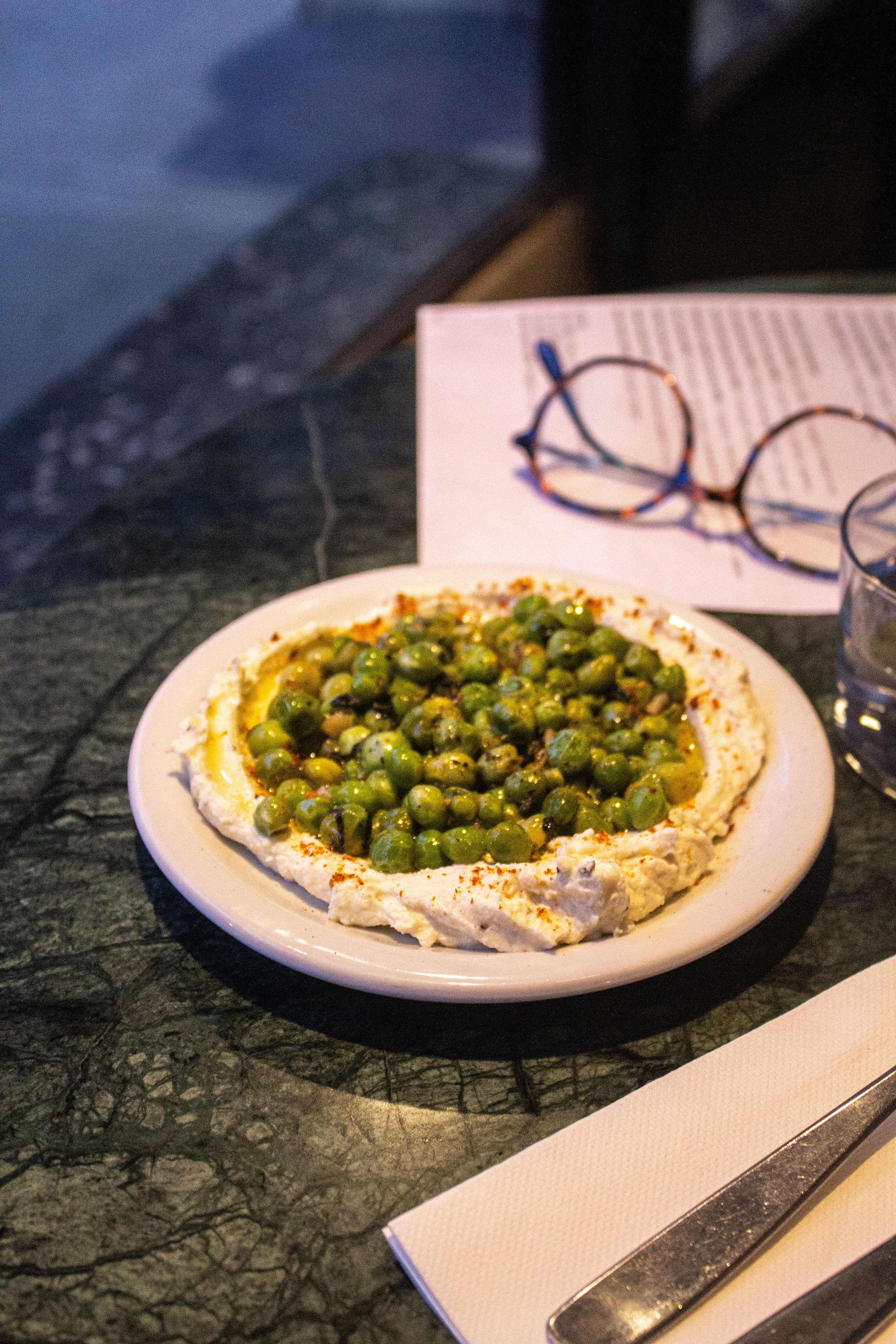
When the peso devalued 20% overnight in mid-August, Pablo and Facundo messaged their clients to encourage them to buy domestic. The reason is that costs shot up because imports are pegged to the dollar, which is convenient smoke and mirrors for encouraging cooks to put their money behind local farmers.
As we move down the aisles, Pablo and Facundo constantly review their dog-eared notebooks — they’re not just looking for the best prices, they grill their customers on what each ingredient will be used for and purchase accordingly. They stop, exchange hellos, chat, laugh, taste, share mate, and repeat at every single stand. They sample several strawberries, inspect dill and lemongrass, chew on arugula, scratch and sniff citrus fruit, snap chili peppers in half, and point out the best spinach to Juan Carlos, who needs it for a weekly special at Gordo Chanta, to quickly char in his pizza oven on top of bechamel and mascarpone. They also search for food that would otherwise get tossed: soft avocado is ideal for salsa guasacaca and overripe papaya makes for a good smoothie.
I spent the following week tracking the ingredients they purchased. I try a few dishes here, a few dishes there, careful to ask each cook which are their favorites each week, what they had to adapt or change or get rid of. At Caversaschi & Co, a pocket-sized bakery in Palermo Hollywood, Chiara Caversaschi turns sweet potato into ñoqui that swim in a blue cheese sauce and fresh greens, preserves quince to top Basque cheesecake, and transforms carrots into a soft three-layered cake.
Over at all-day vegan spot, Fifí Almacén, Luciano Combi reviews the weekly product list and quickly jots down four dishes for their weekend brunch, which on my visit included charred eggplant with pomodoro sauce and seaweed pesto in lieu of anchovies, fava beans and purple potato over creamy artichoke mousseline, and grilled lion’s mane over rice noodles with kumquats, mint, mango, and cilantro, which all pop off like fireworks.
And at the corner bistro Condarco, Pablo Fridman starts by saying, “I have no commitments to any of my dishes.” There are 23 of them and they’re edited constantly depending on what comes in from several purveyors. My favorite was a scoop of ricotta topped with mint and crunchy peas, whole braised leeks over creamed fennel and hot chimichurri, and Brussel sprouts, dissected leaf by leaf, tossed in a miso bagna cauda and pangrattato.
During each meal, I eat and think back to Tita Merello being introduced before the Abasto, and how the humans within the market (and the rest of the people up and down the chain) are much more important than the marketplace they inhabit. I think about how these people and processes are hidden, denied beauty and grandiosity, replaced with order and routine, with chicken nuggets and fries, and the Pablos, Facundos, Juan Carlos’, Chiara, and Lucianos, that bring beauty and grandiosity back where it belongs. Her ¿Qué pasa? resounds in my mind, a call to demand more out of what we purchase, sell, cook, and eat, a call to variety and change, of good eating.




